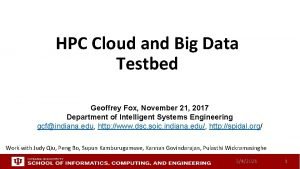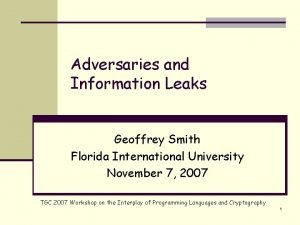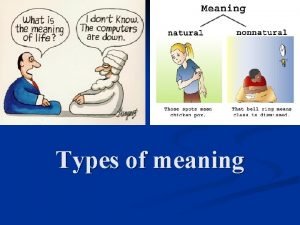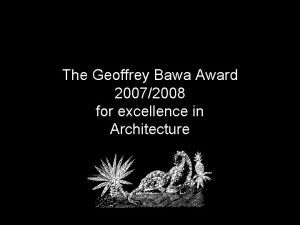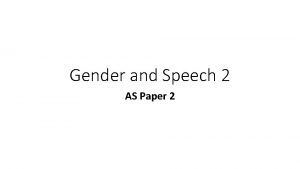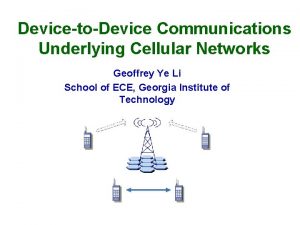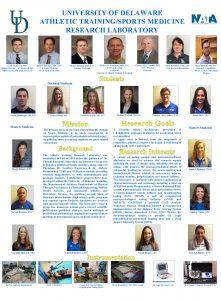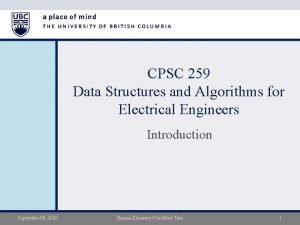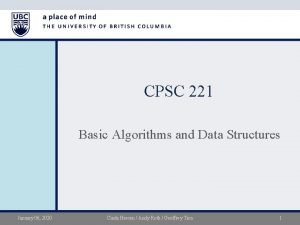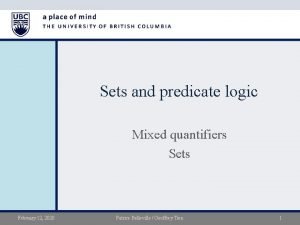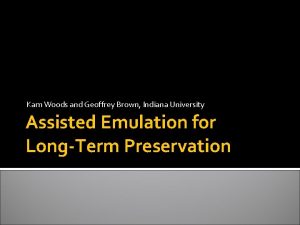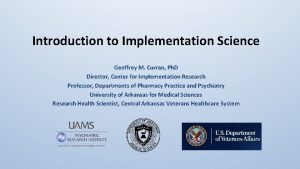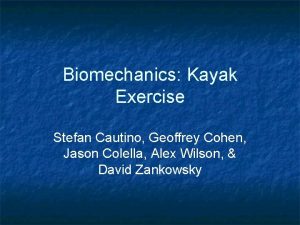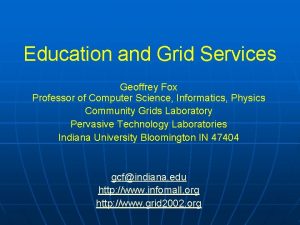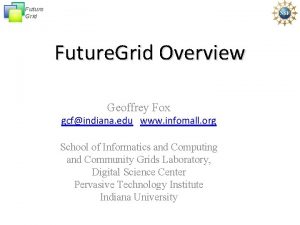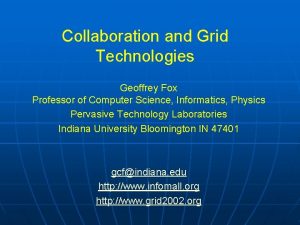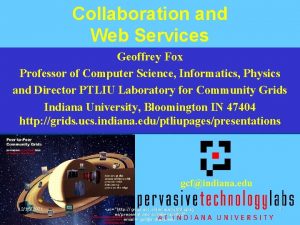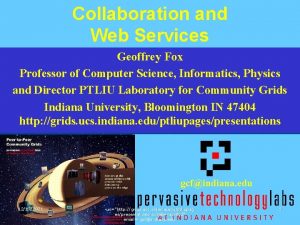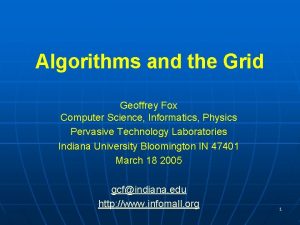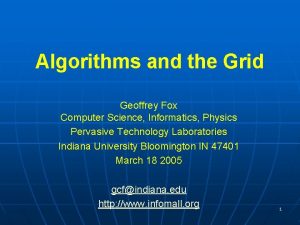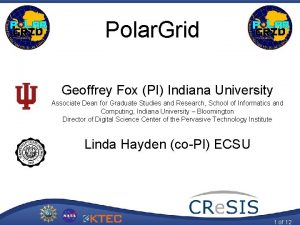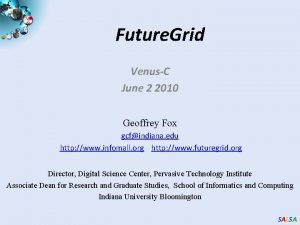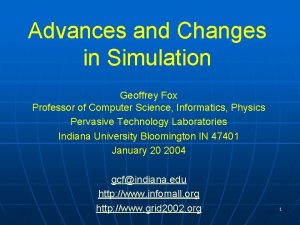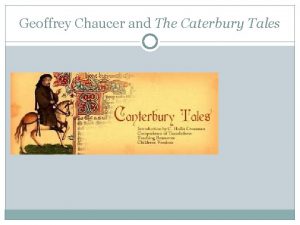Education and Grid Services Geoffrey Fox Professor of




















- Slides: 20

Education and Grid Services Geoffrey Fox Professor of Computer Science, Informatics, Physics Community Grids Laboratory Pervasive Technology Laboratories Indiana University Bloomington IN 47404 gcf@indiana. edu http: //www. infomall. org http: //www. grid 2002. org

Some Players with Education Grid like Technologies n n IMS and ADL in the USA have set standards for some of the special learning metadata structures CHEF (Michigan) and Colloquia (Bangor) are academic groupware projects aimed at education • Access Grid from Argonne is Audio-Video conferencing n n Sakai and OKI are Mellon Foundation projects implementing electronic learning capabilities Blackboard and Web. CT are popular (some places) academic elearning support systems • Several inhouse efforts like On. Course at Indiana n n Docent, Topclass etc. are learning content management systems LCMS mainly selling to corporate training market Centra, Interwise, Placeware, Web. Ex, Groove. Networks are well known collaboration systems that might support distance learning/tutoring and participatory education

Grids in a Nutshell n n Grids are by definition the best of HPCC, Web Services, Agents, Distributed Objects, Peer-to-peer networks, Collaborative environments Grid applications are typically zero or one very large supercomputers, lots of conventional machines, with unlimited data and/or people supporting an electronic (virtual) community • Data sources and people are latency tolerant … • Multiple supercomputers (or clusters) on same Grid as in Tera. Grid/ETF largely for sharing of data and by people Grids are supported by Global Grid Forum, W 3 C, OASIS … setting standards Grids are a “service oriented architecture” hiding irrelevant details • Services are electronic resources communicating by messages • Message based architecture gives scalable loosely coupled component model

Information/Knowledge Grids n n Distributed (10’s to 1000’s) of data sources (instruments, file systems, curated databases …) Data Deluge: 1 (now) to 100’s petabytes/year (2012) • Moore’s law for Sensors n n Possible filters assigned dynamically (on-demand) • Run image processing algorithm on telescope image • Run Gene sequencing algorithm on compiled data Needs decision support front end with “what-if” simulations Metadata (provenance) critical to annotate data Integrate across experiments as in multi-wavelength astronomy Data Deluge comes from pixels/year available

Each service should be able to run independently on separate machines Typical Grid Architecture Re-use Application Customization User Services Application Service Portal Services Application Service Libraries Application Service Middleware Re-use “Core” Grid System Services Raw (HPC) Resources Database

Some Technical Issues n All IT approaches support systems with multiple capabilities • They often reveal and/or standardize interfaces • They could be different method calls, Java classes, or Web/Grid service interfaces n We will ONLY use the word Service when interface can be efficiently accessed by messages with service as an isolated single service • Grids build systems from message-based services Capabilities often called services Module Service even if NOT using Servicea Messages B A Service Oriented Architecture Method Calls 1 to 10 microseconds 10 to 1000 millisecond latency

Message-based or Method-based n n Method-based interfaces are most efficient but can only be run in that fashion in a single monolithic implementation • One service with multiple ports • i. e. each interface might be accessed via message but all capabilities need to be co-located • Technologies like Java RMI allow distributed objects but requires serialization (often non trivial) and unclear if application supports performance loss “Message-based services” support standards and distributed deployment with easy use of standards compliant services from different implementers.

Sakai n n n The University of Michigan, Indiana University, MIT, Stanford, and the u. Portal consortium are joining forces to integrate and synchronize their considerable educational software into a preintegrated collection of open source tools. Sakai builds on OKI – Open Knowledge Initiative – interfaces These Open Service Interface Definitions were developed outside the Grid process but appear to have overlaps with many Web service and Grid standards • Note OGSA-DAI, Security, Workflow, WS-Notification, Grid monitoring, Web. DAV overlaps Although they are called “services”, I think they are being developed initially inside a (single) Java container Does not address real-time collaboration except for chat

Portals n These are used rather inconsistently for • A general term for the whole user experience with an interface to multiple capabilities • Narrow specification of certain capabilities such as customization, server side support for web page generation, aggregation of document fragments (one per service), security • Broad specification to include both user interface and services n Note portals tend to be monolithic frameworks because that’s how one used to build such things • Jetspeed and CHEF’s modification of it are both frameworks n Portals need to be broken up into distributed message based services for security, customization, layout, rendering • Shouldn’t invest too much in today’s frameworks although they have some wonderful features n However Portals do encourage “component” model for user interfaces and so this fits service model so every service can be packaged with its (document fragment) user interface • So portlets are good even if containers primitive

The OGCE Computing Grid Portal • Provides Portlets for – Management of user proxy certificates – Remote file Management via Grid FTP – News/Message systems • for collaborations – – Grid Event/Logging service Access to OGSA services Access to directory services Specialized Application Factory access • Distributed applications • Workflow – Access to Metadata Index tools • User searchable index – Real Time Collaboration • Audio/Video Conferencing OGCE Consortium

Example Capability: File Management • Grid FTP portlet– Allow User to manage remote file spaces – Uses stored proxy for authentication – Upload and download files – Third party file transfer User Jetspeed Portal Server 1 of many Portlets • Request that Grid. FTP server A send a. Grid. FTP file to Grid. FTP server B Server A • Does not involve traffic through portal server Grid. FTP Service Grid. FTP Server B OGCE Consortium

Education Grids n n Education Grids can be considered from at least two points of view 1) Exploiting e-Science and other relevant research government or business grids whose resources can be adapted for use in education • Opportunity to make education more “real” and to give students an idea what scientific research is like n 2) Support the virtual organization that is the teacher and learner community • Actually this community is heterogeneous with teachers, learners, parents, employers, publishers, informal education, university staff …. n Build the Education Grid as a Grid of Grids

Campus or Enterprise Administrative Grid Learning Management or LMS Grid Digital Library Grid Science Grids Bioinformatics Particle Physics Earth Science ……. Typical Science Grid Service such as Research Database or simulation Transformed by Grid Filter to form suitable for education Publisher Grid Education Grid Inservice Teachers Preservice Teachers School of Education Teacher Educator Grids Education as a Grid of Grids Informal Education (Museum) Grid Student/Parent … Community Grid

Education Grid of Grids n n Services in an Education Grid fall into three classes 1) Those that special to Education such as quiz (as in IMS), learning plan or grading services 2) Those that are important but can be taken from other Grids such as collaboration and security 3) Those that come from other Grids and are refactored for education • The simulation is reduced in size • The bioinformatics database interface is simplified e-Science Resource Filter Education Grid View of e-Science Resource Education Grid

Repositories Federated Databases Database Sensors Streaming Data Field Trip Database Research SERVOGrid Data Filter Services Research Simulations ? Discovery Services Geoscience Research and Education Grids Education Customization Services From Research to Education Analysis and Visualization Portal Education Grid Computer Farm

What to do? • Develop a planning grid of interested parties • Grow a teacher and teacher education grid – This would largely be a community/collaboration Grid • Develop prototypes such as Quarknet separating science and teaching side into separate grids – Develop interface/transformational material • Note we do not try to make a single seamless grid but rather multiple federated grids – Use bittorrent not Grid. FTP (or rather transform between them) – Supply education compute resources on demand – Make a deal with Google for free searches • Develop the online instruments, databases, web pages, physics-based games, simulations that are science grids with educational transforms – Videos and MP 3’s of Scientists in action • Develop collaborative whiteboards/ video/ imagery/ chats/ white-papers/ experts-on-demand that form a community grid – Instant Messenger, audio/video conferencing – Content annotation critical • Develop a hub linking multiple education-transformed science grids together

Undergroundfilm. org is/will be a community grid for educational film makers (run by Community Grids Laboratory) Has viewer evaluation of content Will offer services such as transforming formats Digital object archives for animation etc.

http: //www. yafro. com supports digital camera images (as on modern cell phones) and builds community around discussion of this

Community Grid A/V Conferencing Use Multiple Media servers to scale to many codecs and many versions of audio/video mixing Session Server XGSP-based Control Narada. Brokering All Messaging NB Scales as distributed Admire Web Services SIP H 323 Media Servers Filters High Performance (RTP) and XML/SOAP and. . Access Grid Gateways convert to uniform XGSP Messaging Narada. Brokering Native XGSP

Summary n n n n n Grids are inevitably important for Education Grid of Grids interesting way to build “new Grids” that might be accepted by skeptical participants and enhance re-use IMS has set data but not many service standards • Partial step to interoperability Sakai is building modern (probably wonderful) open e-learning capabilities but appears not to be a Grid/WS standards compliant service architecture Current academic/commercial systems are successful but monolithic Opportunity to build service-based Education Grid Infrastructure interacting with broad community (from Grids to WS to Schools of Education) exploiting other Grids Can build collaboration – A/V Conferencing, Shared applications, groupware – in Grid/WS architecture Critical to build on Community Grids as popularized in P 2 P networks Can develop best practice and tools to allow e-Science grids to be linked to education Can encourage use of component-based portals
 Geoffrey fox
Geoffrey fox Professor geoffrey smith fiu
Professor geoffrey smith fiu Promotion from associate professor to professor
Promotion from associate professor to professor Pin grid array and land grid array
Pin grid array and land grid array Geoffrey chaucer performer heritage
Geoffrey chaucer performer heritage Examples of product vision statements
Examples of product vision statements Geoffrey brown nsf
Geoffrey brown nsf Geoffrey pritchard
Geoffrey pritchard Geoffrey leech seven types of meaning
Geoffrey leech seven types of meaning Geoffrey bawa awards
Geoffrey bawa awards Prince royce
Prince royce Geoffrey beattie interruptions
Geoffrey beattie interruptions Geoffrey ye li
Geoffrey ye li Sports med udel
Sports med udel Geoffrey tien ubc
Geoffrey tien ubc Ubc cpsc 221
Ubc cpsc 221 Geoffrey tien
Geoffrey tien Kam woods
Kam woods Geoffrey curran
Geoffrey curran Dr geoffrey cohen
Dr geoffrey cohen Geoffrey chaucer notes
Geoffrey chaucer notes
